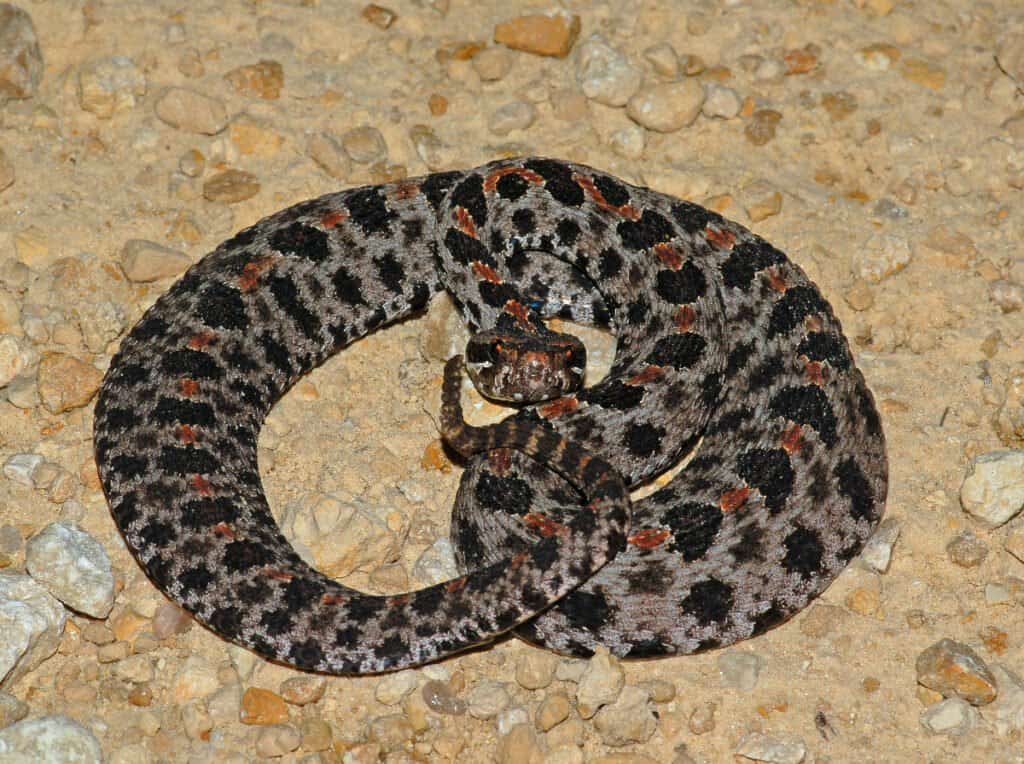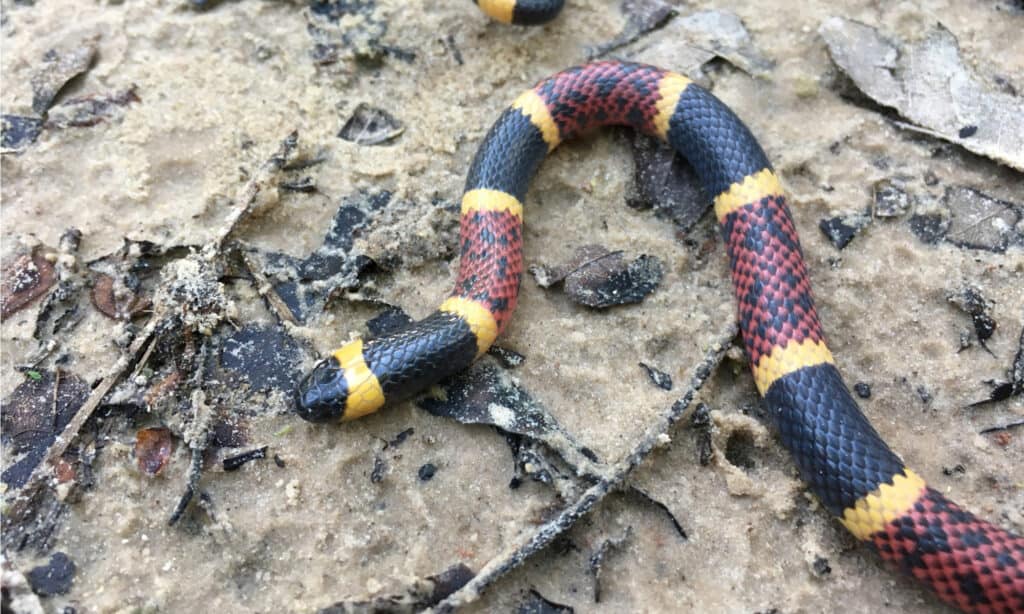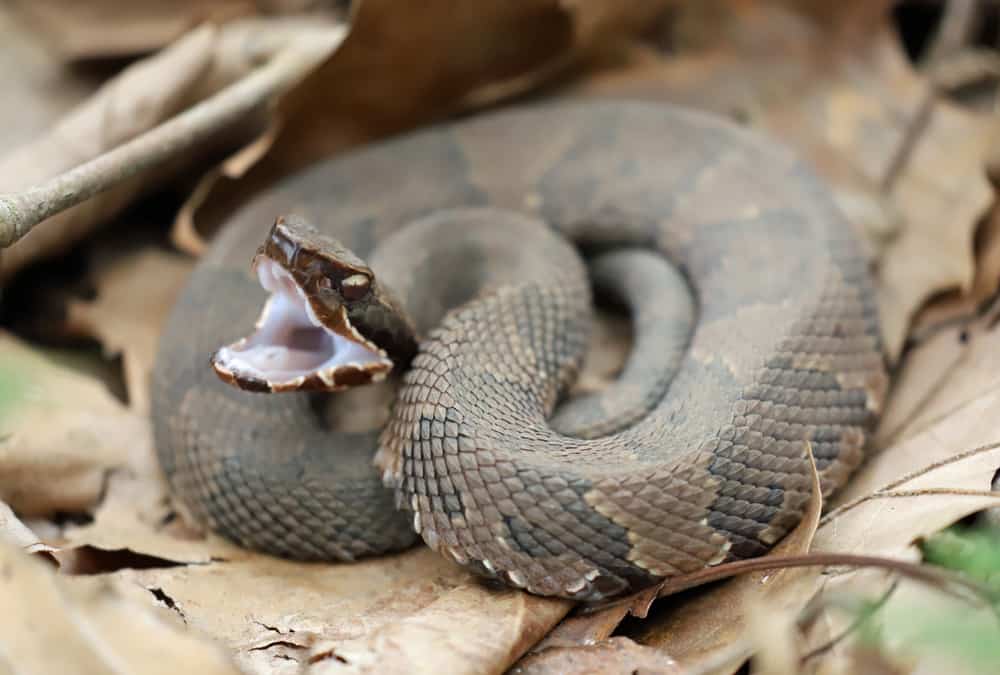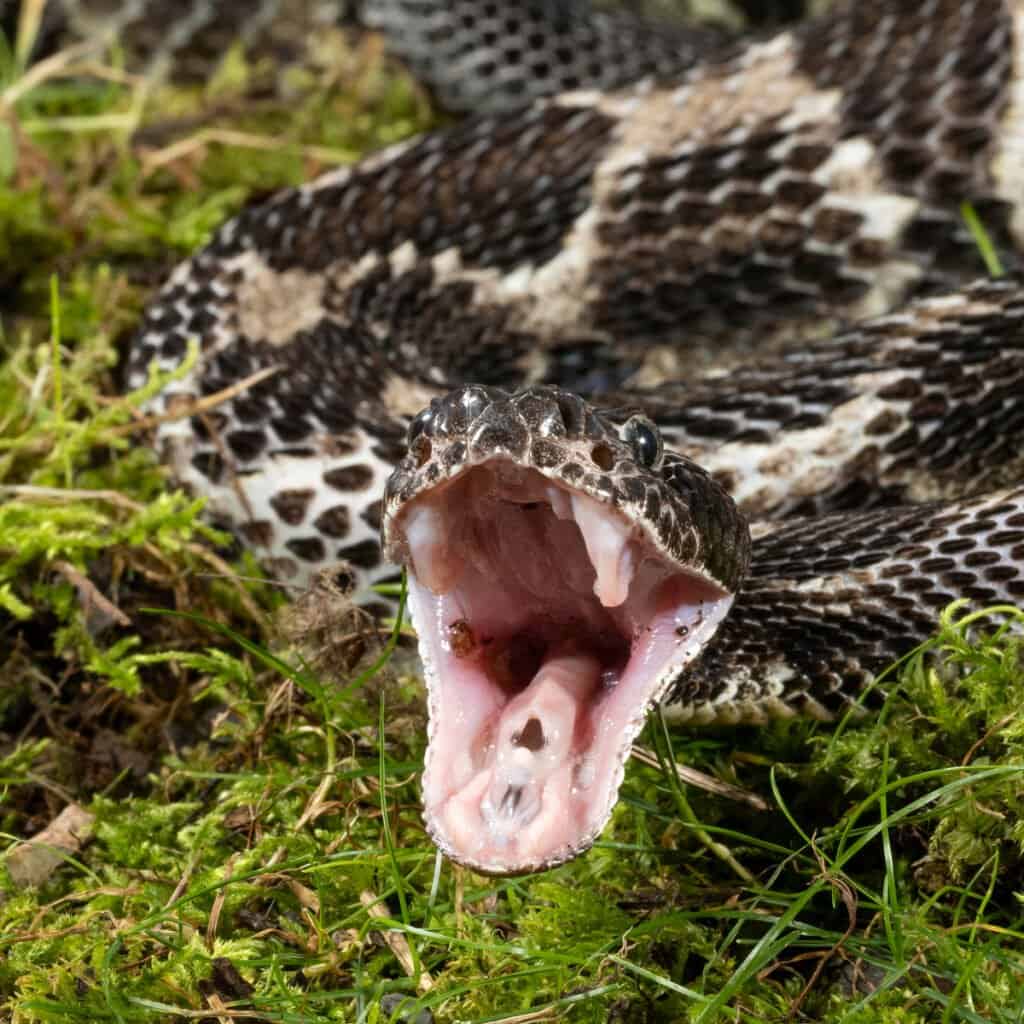The state of Arkansas is full of natural beauty and is a wonderful outdoor vacation destination. The gorgeous landscapes of the Ozark highlands and the Ouachita Mountains alone are enough to inspire any outdoor lover. But as any outdoor expert will tell you, all that natural beauty is home to some dangers. Arkansas has six venomous snakes and three of them are rattlesnakes! Which snakes are the largest (and most dangerous) snakes in Arkansas? Which species is number one? Let us get into this list and find out!
The largest and most dangerous snakes found in Arkansas are the western pygmy rattlesnake, the western diamondback, the timber rattlesnake, the Texas coral, the copperhead, and the cottonmouth. To find out which species takes the top spot, we must start small and work our way up. However, size is not everything. The most dangerous snake in the state might not be the biggest, but in the United States, they are the deadliest!
Honorable Mention: The Western Pygmy Rattlesnake

Gerald A. DeBoer/Shutterstock.com
Western pygmy rattlesnakes can be identified by their slate grey coloring, black crossband markings, and the reddish stripe down the back. They have lean, muscled bodies and narrow spear-tip-shaped heads and are the smallest of the rattlesnake species.
While this species is the smallest of Arkansas venomous snakes, its bite is still capable of costing a limb without medical intervention! This snake species can be found in all parts of the state except for its far eastern border.
Texas Coral Snake

Joe Farah/Shutterstock.com
Texas coral snakes can be identified by their overall red and black stripes, as well as their distinct yellow banding between each color. Like many other species of water-loving snakes, they have thin, long bodies and small heads. Coral snakes are often confused with non-venomous snakes, which have similar overall colors and markings. To tell them apart, remember, “Red touch black, venom lack. Red touch yellow, kill a fellow.”
In Arkansas, the Texas coral snake is found primarily in the Ouachita River and the southern region of the Little Mississippi River. While smaller than other snakes on this list, they can be far more deadly. However, with prompt medical attention, antivenom treatment is highly effective. Because of this, Arkansas has not had a bite-related death caused by this species since the 1960s!
Eastern/Southern Copperhead

Dennis W Donohue/Shutterstock.com
Copperheads can be identified by their overall reddish-brown coloring and brown hourglass markings. This species has a triangular head and slitted pupils like many other pit vipers. Copperheads are nocturnal but are more active during the day in the fall and spring. While most bites occur through accidental contact, they are aggressive when disturbed.
In Arkansas, the copperhead species can be found throughout the state. While considered to be one of the more aggressive snake species, they tend to avoid human dwellings. However, copperheads bite more people on average than any other United States snake.
Cottonmouth

KF2017/Shutterstock.com
Cottonmouths are a reddish-brown color with black banded markings that darken to grey or black when mature. It has a spade-shaped head that distinguishes them from non-venomous water moccasins. While cottonmouths are not considered overly aggressive, most bites happen by accident when humans encounter them in water. Don’t be fooled by this snake’s reclusive nature though, a cottonmouth in Florida once took on an alligator!
In Arkansas, the cottonmouth can be found everywhere, but are less common near the Ozark highlands or the Ouachita mountains.
Western Diamondback Rattlesnake

Alexander Wong/Shutterstock.com
Western Diamondbacks are identified by their brown/tan/fawn coloring and distinctive deep brown/black diamond markings. They have thick, muscular bodies and large, spade-shaped heads with dark diagonal stripes below the eyes. The largest western diamondback ever recorded was seven feet long!
This species is the rarest venomous snake spotted in Arkansas and is primarily found in the Ouachita Mountain region and the southwestern regions of the Ozark highlands.
Timber Rattlesnake

Joe McDonald/Shutterstock.com
The largest and most dangerous snake in Arkansas is the timber rattlesnake. Timber rattlesnakes are a yellowish-grey color overall, with brown to black arrow-shaped markings and a reddish-brown vertical stripe on the back. Like many rattlesnakes, the timber species prefers areas with little human contact. However, they are also known to give far less warning prior to striking than other rattlesnakes. While a slow retreat is recommended for other species, most experts advise you to get away from Timber rattlers quickly.
The timber rattlesnake is not only the deadliest in Arkansas, but it also has the highest venom concentration of any U.S. snake! The species is found all over the state and is most active between April to October. Though rattlers prefer to avoid human locations, a Texas family once came home to find a timber rattlesnake sitting on their couch!
Up Next
- 12 Black Snakes In Arkansas
- Discover The Three Largest (And Most Dangerous) Snakes In New York
- Discover The Three Types Of Rattlesnake In Arkansas
The post Discover The Top 6 Largest (And Most Dangerous) Snakes In Arkansas This Summer! appeared first on AZ Animals.
from Animal News, Facts, Rankings, and More! - AZ Animals https://ift.tt/kJmK0FQ